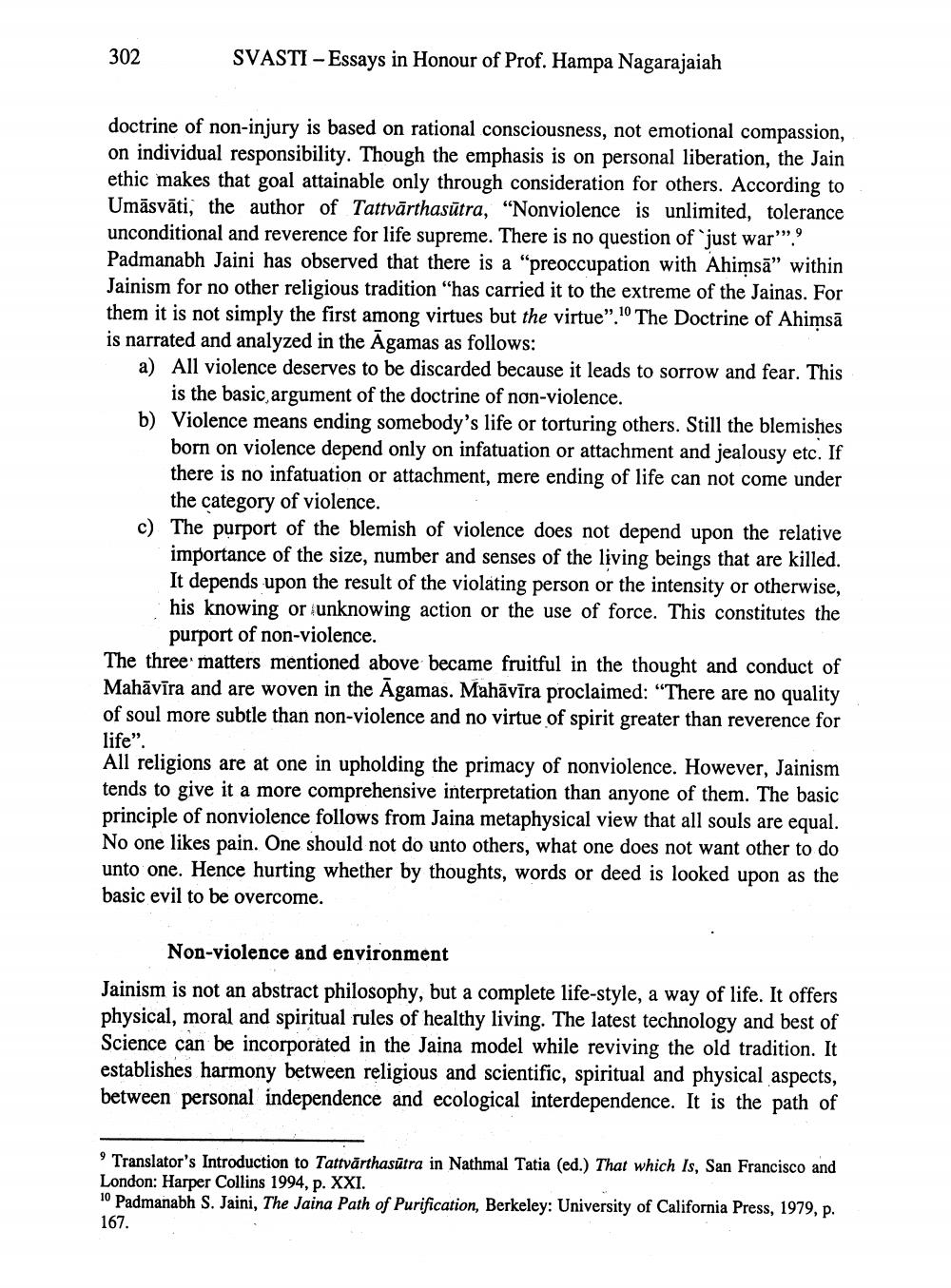________________
302
SVASTI – Essays in Honour of Prof. Hampa Nagarajaiah
doctrine of non-injury is based on rational consciousness, not emotional compassion, on individual responsibility. Though the emphasis is on personal liberation, the Jain ethic makes that goal attainable only through consideration for others. According to Umāsvāti, the author of Tattvārthasūtra, “Nonviolence is unlimited, tolerance unconditional and reverence for life supreme. There is no question of just war"! Padmanabh Jaini has observed that there is a "preoccupation with Ahimsā” within Jainism for no other religious tradition “has carried it to the extreme of the Jainas. For them it is not simply the first among virtues but the virtue". 10 The Doctrine of Ahimsā is narrated and analyzed in the Agamas as follows: a) All violence deserves to be discarded because it leads to sorrow and fear. This
is the basic, argument of the doctrine of non-violence. b) Violence means ending somebody's life or torturing others. Still the blemishes
born on violence depend only on infatuation or attachment and jealousy etc. If there is no infatuation or attachment, mere ending of life can not come under
the category of violence. c) The purport of the blemish of violence does not depend upon the relative
importance of the size, number and senses of the living beings that are killed. It depends upon the result of the violating person or the intensity or otherwise, his knowing or unknowing action or the use of force. This constitutes the
purport of non-violence. The three matters mentioned above became fruitful in the thought and conduct of Mahāvīra and are woven in the Agamas. Mahāvīra proclaimed: “There are no quality of soul more subtle than non-violence and no virtue of spirit greater than reverence for life". All religions are at one in upholding the primacy of nonviolence. However, Jainism tends to give it a more comprehensive interpretation than anyone of them. The basic principle of nonviolence follows from Jaina metaphysical view that all souls are equal. No one likes pain. One should not do unto others, what one does not want other to do unto one. Hence hurting whether by thoughts, words or deed is looked upon as the basic evil to be overcome.
Non-violence and environment Jainism is not an abstract philosophy, but a complete life-style, a way of life. It offers physical, moral and spiritual rules of healthy living. The latest technology and best of Science can be incorporated in the Jaina model while reviving the old tradition. It establishes harmony between religious and scientific, spiritual and physical aspects, between personal independence and ecological interdependence. It is the path of
9 Translator's Introduction to Tattvārthasūtra in Nathmal Tatia (ed.) That which Is, San Francisco and London: Harper Collins 1994, p. XXI. 10 Padmanabh S. Jaini, The Jaina Path of Purification, Berkeley: University of California Press, 1979, p.
167.




